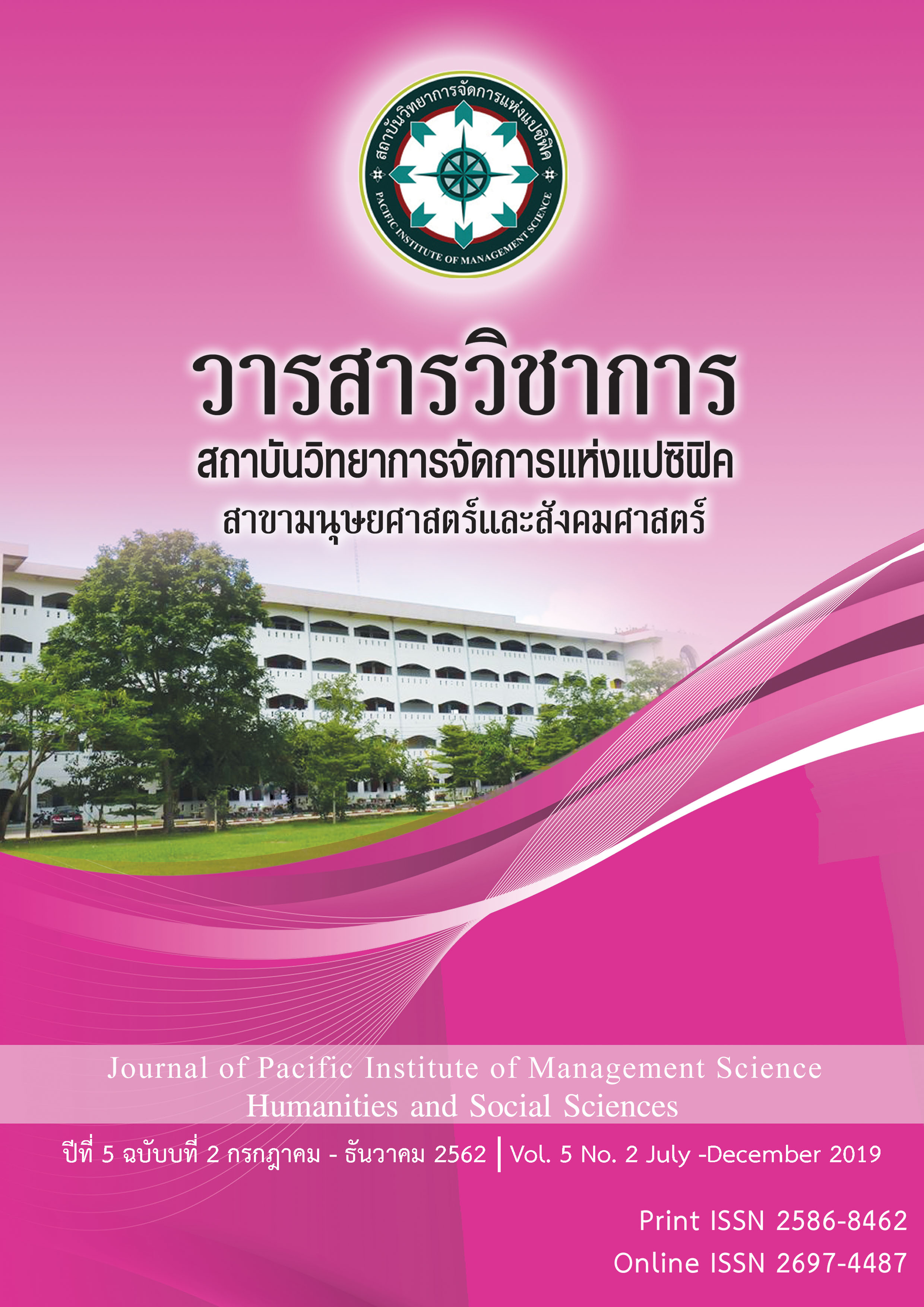Characteristics of buyers - Website characteristics affecting internet purchases in emerging markets.
Keywords:
Characteristics of buyers, Website characteristics, Internet purchases, Emerging marketsAbstract
Commercial electronic transactions have a high rate and quantity in both Europe and America, but in developing countries in the Asia Pacific region, particularly in Thailand which is considered an emerging market that has the potential on trade or commercial electronic transactions due to the low rate and quantity of commercial electronic transactions. Therefore, academic studies of important factors that affect online purchases will help marketers in both retail and electronic markets to prepare marketing strategies for websites that is suitable for each consumer group. The literature and relevant research review found that there is a gap of knowledge that can be further developed into research studies. These can answer the following questions: 1) What are the key factors influencing consumers to make decisions about buying online products in emerging markets? 2) The characteristics of buyers - websites that are related whether to online purchases of customers in emerging markets or not? 3) The product market level affects whether the relationship of the characteristics of the buyer - the website on the online shopping of the customer or not. These are to guarantee the reliability, building of engagement, fulfillment of demand, create and increase satisfaction, attract consumers to buy products and attract existing customers for repeat purchases in the future.
References
อาณัติ ลีมัคเดช. (2546). E – COMMERCE: เรียนรู้พาณิชย์อิเลกทรอนิกส์ ภาคทฤษฎีและปฏิบัติ. กรุงเทพฯ : เอ.อาร์. บิซิเนสเพรส. 330 หน้า.
Ab Hamid, N. R. (2005). E-CRM: are we there yet? Journal of UK Academy of Business, 6 (1), 51 - 57.
Mandal, P. (2004). Inter-country Analysis of E-Business. Journal of Global Information Technology Management, 7 (2) 1 – 5.
Alba, J.W. & Hutchinson, J.W. (1987). Dimensions of Consumer Expertise. Journal of Consumer Research, 13 (4), 411 – 454.
Baskin, J. & Gordon K. (2005). Corporate Responsibility Practices of Emerging Market Companies.
OECD Working Papers on International Investment, No. 2005/03, Paris: OECD Publishing.
Canning, L. (2004). Relationship Marketing: Dialogue and Networks in the E-commerce Era. European Journal of Marketing, 38 (8), 1031-1032.
Chen J.S. & Ching R.K.H. (2004). An empirical study of the relationship of IT Intensity and Organizational Absorptive Capacity on CRM Performance. Journal of Global Information Management, 12 (1), 1 – 17.
David J. R. (2002). What Attracts Customers to Online Stores, and What Keeps Them Coming Back?. Journal of the Academy of Marketing Science, 30 (4), 465-473.
Ernst & Young. (2001). Global Online Retailing : An Ernst &Young Special Report. United States : Ernst & Young LLP. 142 pages
Haeberle, M. (2004). Constructing a New View: TruServ improves its store owners’ insight through a new Web-based portal. Chain Store Age. Retrieved January 30, 2017 from https://iooc.com/pdfs/chainstoreage_august.
Huang Z., Chung W. & Chen H. (2004). A graph model for E-commerce recommender systems.
Journal of the American Society for Information Science and Technology, 55 (3), 259-274.
Kelley L.L, Gilbert D.& Mannicom R. (2003). How e-CRM can enhance customer loyalty. Marketing Intelligence & Planning ,21 (4), 239 – 248.
Khanna, Palepu KG & Sinha J. 2005). Strategies that Fit Emerging Markets. Harvard Business Review, 83 (6), 63 - 74.
Lopperi, K. & Sengupta, S. (2004). Are we ready? The state of wireless e-business in the USA.
Information Systems and e-Business Management, 2 (4), 293–307.
Perera D. (2005). The voices of industry. Federal Computer Week, 19, (3), 20.
Petrova, K. & Claxton, G. (2005). Building Student Skills and Capabilities in Information Technology and eBusiness : A Moving Target. Journal of Information Systems Education, 16 (1), 27-41.
Reibstein, D.J. (2002). What Attracts Customers to Online Stores, and What Keeps Them Coming Back?. Journal of the Academy of Marketing Science, 30 (4), 465 – 473.
Sagi J., Carayannis E., Dasgupta S. & Thomas G. (2004). ICT and Business in the New Economy: Globalization and Attitudes Towards eCommerce. Journal of Global Information Management, 12 (1), 1 – 17.
Sims, M. (2005). Setting the rules on public content. Intermedia, 33 (1), 22.
Srinivasan R., Gary L. Lilien G.L. & Rangaswamy A. (2004). First In, First Out? The Effects of Network Externalities on Pioneer Survival. Journal of Marketing, 68 (1), 41 – 58.
Downloads
Published
Issue
Section
License
บทความที่ได้รับการตีพิมพ์เป็นลิขสิทธิ์ของ สถาบันวิทยาการจัดการแห่งแปซิฟิค
ข้อความที่ปรากฏในบทความแต่ละเรื่องในวารสารวิชาการเล่มนี้เป็นความคิดเห็นส่วนตัวของผู้เขียนแต่ละท่านไม่เกี่ยวข้องกับสถาบันวิทยาการจัดการแห่งแปซิฟิค และคณาจารย์ท่านอื่นๆในสถาบันฯ แต่อย่างใด ความรับผิดชอบองค์ประกอบทั้งหมดของบทความแต่ละเรื่องเป็นของผู้เขียนแต่ละท่าน หากมีความผิดพลาดใดๆ ผู้เขียนแต่ละท่านจะรับผิดชอบบทความของตนเองแต่ผู้เดียว







